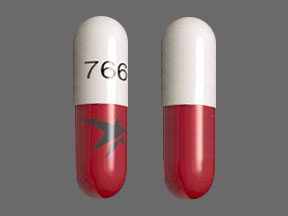Cresemba Disease Interactions
There are 2 disease interactions with Cresemba (isavuconazonium).
Isavuconazonium (applies to Cresemba) short QT
Major Potential Hazard, Moderate plausibility. Applicable conditions: Short QT Syndrome
Isavuconazonium shortened the QTc interval in a concentration-related manner. This drug is contraindicated in patients with familial short QT syndrome.
References (1)
- (2015) "Product Information. Cresemba (isavuconazonium)." Astellas Pharma US, Inc
Isavuconazonium (applies to Cresemba) liver disease
Moderate Potential Hazard, Moderate plausibility.
The use of isavuconazonium has been associated with hepatic adverse reactions (e.g., elevations in ALT, AST, alkaline phosphatase, total bilirubin). Cases of more severe hepatic reactions (including hepatitis, cholestasis, hepatic failure including death) have been reported during therapy in patients with serious underlying medical conditions (e.g., hematologic malignancy). Liver-related laboratory tests should be evaluated at the start and during therapy. Isavuconazonium has not been studied in patients with severe liver dysfunction (Child-Pugh C) and should be used in these patients only when the benefits outweigh the risk. Clinical monitoring for drug-related side effects is recommended when treating patients with severe liver dysfunction.
References (1)
- (2015) "Product Information. Cresemba (isavuconazonium)." Astellas Pharma US, Inc
Switch to consumer interaction data
Cresemba drug interactions
There are 498 drug interactions with Cresemba (isavuconazonium).
More about Cresemba (isavuconazonium)
- Cresemba consumer information
- Check interactions
- Compare alternatives
- Pricing & coupons
- Reviews (3)
- Drug images
- Side effects
- Dosage information
- During pregnancy
- FDA approval history
- Drug class: azole antifungals
- En español
Related treatment guides
Drug Interaction Classification
| Highly clinically significant. Avoid combinations; the risk of the interaction outweighs the benefit. | |
| Moderately clinically significant. Usually avoid combinations; use it only under special circumstances. | |
| Minimally clinically significant. Minimize risk; assess risk and consider an alternative drug, take steps to circumvent the interaction risk and/or institute a monitoring plan. | |
| No interaction information available. |
See also:
Further information
Always consult your healthcare provider to ensure the information displayed on this page applies to your personal circumstances.


